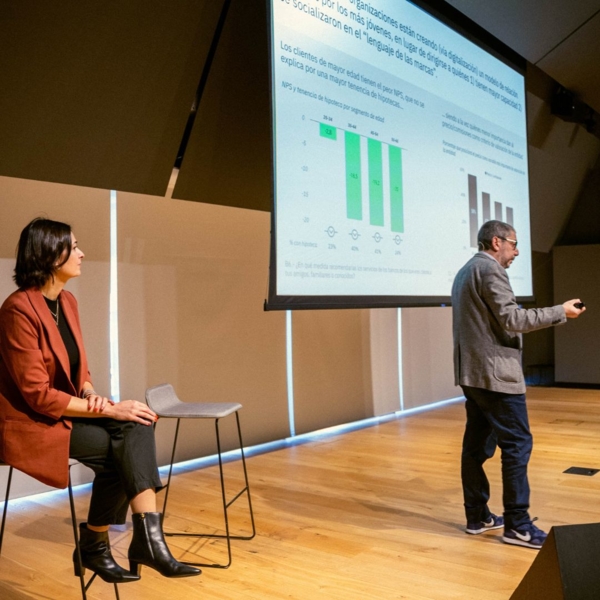Trends Review 2024, the keys of the Spanish consumer
Category: experiencia, brand, consumer
Category: experiencia, brand, consumer

How has the nature of desire evolved in today's society? Do we desire less than at other times in our recent history? After years of exhaustion and distrust in the future, the consumer is beginning to show signs of activation: although timidly, there are indicators of a more proactive and expansive attitude. This is one of the conclusions of Trends Review 2024.
This document, based on the synthesis of nearly 300 consumer studies during 2023, identifies 7 major trends that will shape the relationship of users with brands and services during this same year.
Desire is inherent to human beings, and has been, in the era of expansion of the consumer society, one of the main tools for creating the bond between consumers and brands. The accumulation of crises has created a context that has made companies bet on other solutions to create this bond (immediate gratification, focus on functionality and direct benefit) which, although relevant, generate a weaker relationship.
Although we are not yet in a period of growth, there is a certain recovery of some keys that help the expansion of desire (a broader idea of the future than a few years ago, a certain "energetic" recovery). Thus, its stimulation can once again be a tool for the creation of a bond with the consumer. However, it will be a different desire than in the golden age of the consumer society, with other objects of interest and other tools to satisfy it. Those brands that manage to identify these new routes to desire will have a powerful tool for differentiation.
"Desire is a polysemic word but, in all uses, it is synonymous with deferred gratification." Felipe Romero, CEO of The Cocktail Analysis
"Brands must deliver a consumer experience that is personable, clean and calm, using even smarter formats to mobilize and connect with consumers." María Herranz, Insight Manager de The Cocktail Analysis
3. The AI fantasy
In this moment of sensitivity and saturation of screens we find ourselves with Artificial Intelligence. Consumers are concerned about the centrality and omnipresence that technology can occupy in their lives. Because of this, it moves between the fantasy of how brands can optimize their relationship through AI and in turn the ghosts of how it can end up dominating the user arise.
It is important to optimally manage the integration of AI into processes to extract the full potential, but approach it with an eye on how this affects the customer relationship. In the area of communication and service, this technology clearly becomes an ally where personalization enhances the experience. But it is in the area of product and service where the user must feel in control of their decisions.
"Consumers penalize impoverished experiences much more. If you give me a machine, let it be because it can do it better than a human", María Herranz
4. Home: from palace to well
In the pandemic era, consumers invested significantly in improving their homes, making them their refuge. The rise in prices in all areas makes the user more aware of the consumption he makes at home. For example, according to INE data, basic products increased in price by more than 10%, but restaurant prices rose by only 5.9% over the previous year. Thus, the rise has been asymmetrical inside and outside the home. For this reason, there is a growing awareness that staying at home means spending, and in this sense there are key strategies that brands can activate to connect with this moment around the home: promoting formats that help to control, better manage the use and consumption that is made, tools and solutions to control spending or recommendations for good resource management, among others.
5. The physical space
This environment is revealed as the place to disconnect from the digital routine - in Spain, 35% of break time is spent using the Internet - but the consumer does so through more productive, stimulating and condensed experiences. Brands can and must conquer the physical space to, beyond satisfying gratification, connect with consumers.
6. The generational gap
Age has always been a relevant variable, but with a factor that attenuated its impact compared to others: the future. The change in the socioeconomic model after 2007 prevented younger age groups from capturing social wealth: age, which was a segmentation variable, is now a conflict variable.
Organizations can still establish a certain dialogue with older generations, because they have been socialized in the classic model of relationship with brands: they have been educated in the perspective of consumption as a tool and indicator of success, they have more positive emotions, less anxiety, less media saturation and more intense TV consumption.
However, brands, through digitalization, are creating a relationship model that is acceptable to young people, but uncomfortable for the older age groups, which are precisely those with the greatest purchasing power. Therefore, it is still appropriate to bet on the classic communication model of organizations.
7. Breaking the inertia
We are at a time when major social issues such as feminism or sustainability, although still relevant, have lost their ability to attract attention. The purpose that companies define for themselves is their great narrative, and it has also lost its capacity to attract people. However, companies should not give it up as it generates organizational alignment, talent adherence and, although it generates less traction at the time, it does not fail to lay the foundations of a relationship in tune with the customer. The challenge is to "fill" the organization with meaningful acts that concretize this purpose, that guarantee that the organization's great narrative is concretized in all areas of the relationship with the consumer.
"The intention of Trends Review is to have a perspective of how the Spanish consumer is evolving, to work from their point of view, with the aim of providing tools to brands to understand the upcoming evolution of their customers." Felipe Romero